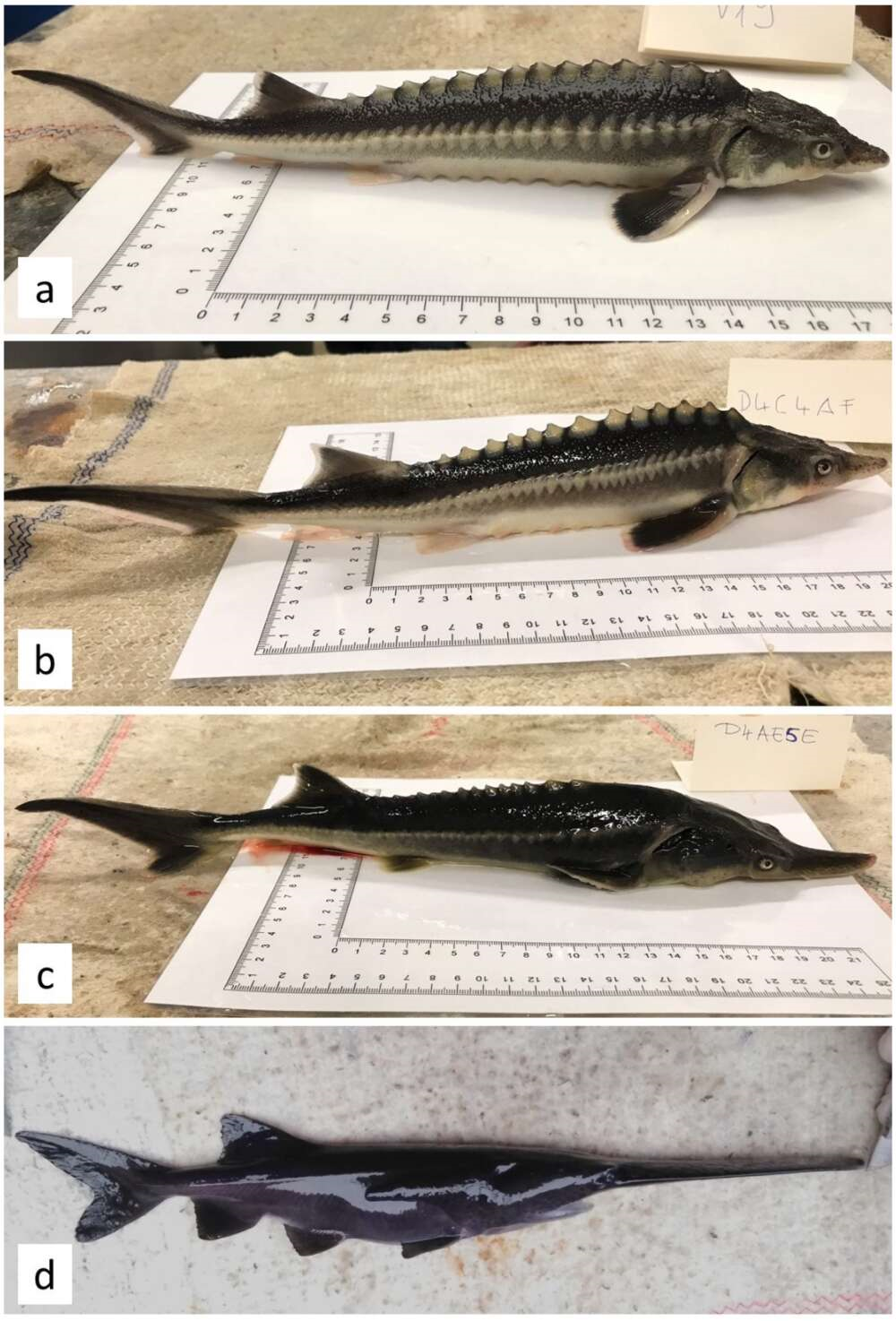A surprise fertilization event in a fish nursery stunned scientists in 2020 when American paddlefish and Russian sturgeon successfully bred to create a hybrid group of animals dubbed “sturddlefish”. Cooked up by the gametes of seven individuals, the proceeding group exhibited different ratios of features from the two species, with some looking more like their maternal sturgeon DNA, while others were more of a 50-50 mash-up.
If you’re someone of refined taste, Russian sturgeon (Acipenser gueldenstaedtii) eggs may be familiar to you as they’re a sought-after ingredient for fancy caviar. These enormous carnivores shuffle along the beds of rivers, lakes, and coastal waters hoovering up crustaceans and fish.
American paddlefish (Polyodon spathula), on the other hand, are filter feeders sucking up zooplankton from the water in 22 US states. They have shark-like bodies with a comically long and highly sensitive snoot attached to their face that constitutes one-third of their total body length.
Both animals are some of the largest and longest-living fish species in the world, with an ancient divergence from the evolutionary tree that classes them as living fossils. They exist in different parts of the planet and last shared a common ancestor when dinosaurs roamed the Earth, leading researchers to think they were far too removed to be hybridized. Don’t you just love it when we get things totally wrong?

A: typical young Russian sturgeon. B and C: hybrids of sturgeon and paddlefish, or sturddlefish. D: typical young paddlefish.
The accident came about as scientists at the Research Institute for Fisheries and Aquaculture in Hungary were trying to ascertain if introducing asexual reproduction into paddlefish and sturgeon could protect their population numbers, which are plummeting in the face of overfishing, pollution, and habitat loss. Instead of ending up with lots of paddlefish and sturgeon clones, they found themselves with a new animal altogether, and since – despite their evolutionary distance – these two species share some physical traits, the resulting offspring appear to be surviving.
Hybridization is not encouraged in science, with previous attempts to hybridize tiger species having catastrophic results, and the researchers stress that it was never their intention that the two species should breed. Against the odds, 62 to 74 percent of the hybrid sturddlefish had survival rates beyond 30 days. However, like many other hybrids, the offspring were sterile, but the unexpected result of housing these two very, very distantly related species goes to show that sometimes life really does, uh, find a way.
The study, from July 2020, is published in the journal Genes.
Source Link: The Sturddlefish Hybrid Connects Two Species Separated Since The Jurassic